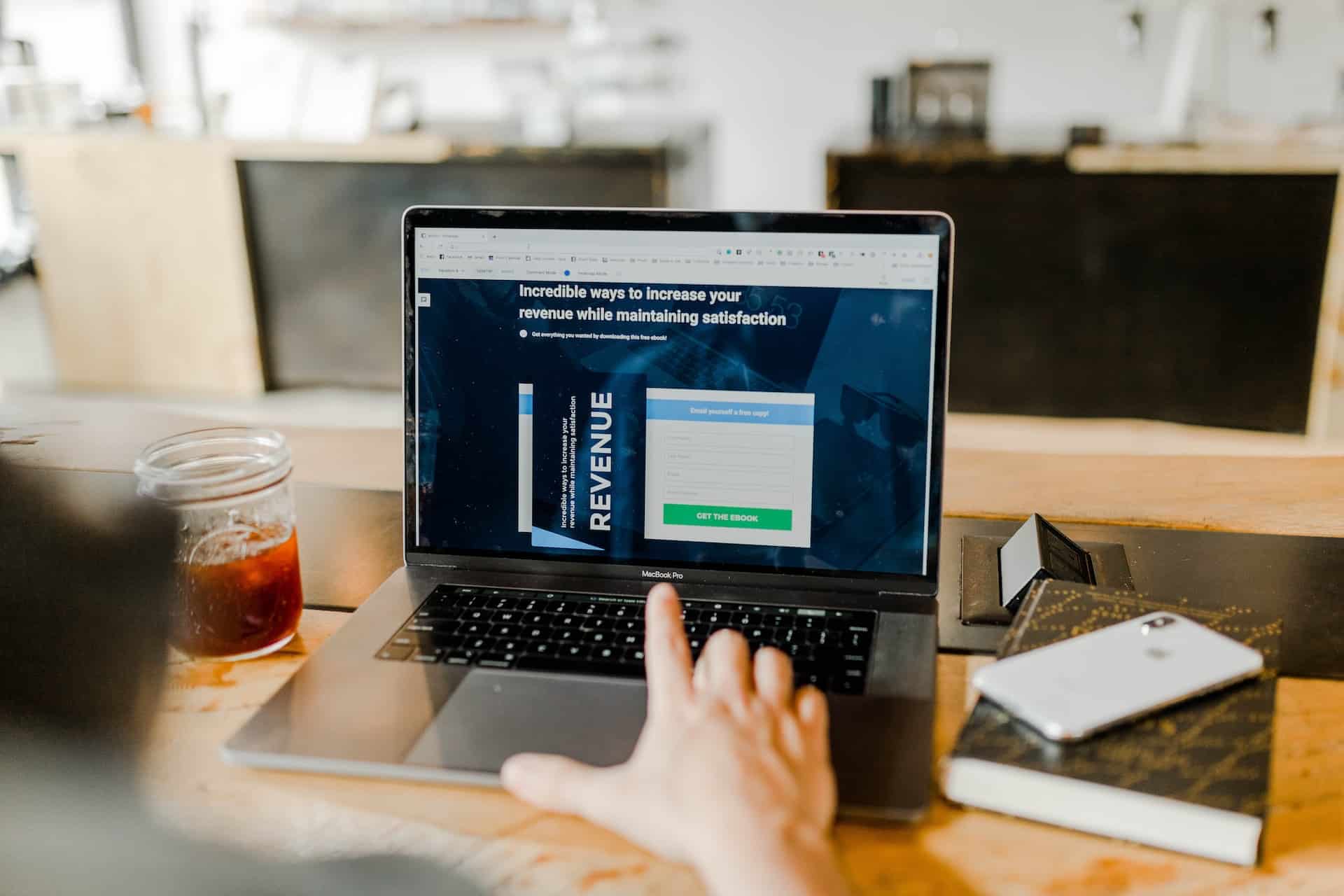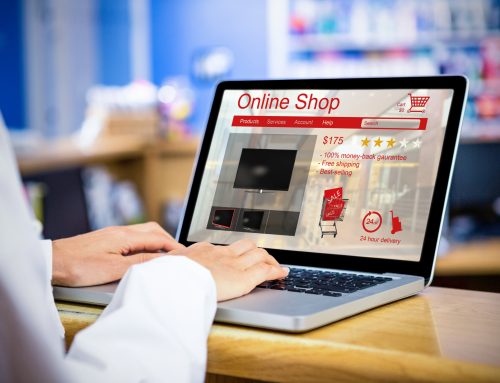How To Improve Your Website’s Conversion Rate
Overview
In today’s digital age, having a website is crucial for any business or organization.
However, just having a website is not enough.
In order to make the most out of your online presence, you need to focus on improving your website’s conversion rate.
Conversion rate refers to the percentage of visitors to your website who take a desired action, such as making a purchase, filling out a form, or subscribing to your newsletter.
A high conversion rate means that your website is effectively engaging and persuading visitors to take action, which ultimately leads to more sales, leads, and revenue.
Improving your website’s conversion rate can seem daunting at first, but it’s a process that can be broken down into actionable steps.
To improve your website’s conversion rate, focus on optimizing your website’s design and content, leveraging social proof and user data, and providing a seamless user experience.
In this article, we’ll explore some of the most effective strategies and tactics for boosting your website’s conversion rate.
From optimizing your website’s design and content to leveraging social proof and user data, we’ll cover a range of approaches that you can start implementing today.
Whether you’re running an e-commerce store or a content-based website, these tips will help you attract and convert more visitors into loyal customers.
So, let’s dive in!
What Is A Website Conversion Rate?
A website conversion rate is a metric that measures how often the visitors of your website take an action that you want them to take.
It’s usually expressed as a percentage, and it’s calculated by dividing the total number of conversions (the actions you wanted your visitors to make) by the total number of visits received on a particular page or across your entire website.
For example, if a product page on your site gets 200 visits in one month and those visits result in 20 purchases, then the conversion rate for that page would be 10% – meaning that 10% of people who visited that page made a purchase.
This helps you track how successful different parts of your website are at getting people to take certain desired actions.
What Is A Good Conversion Rate On A Website?
A good website conversion rate is one that effectively converts visitors into customers, subscribers, or whatever the desired action may be.
However, what constitutes a “good” conversion rate can vary depending on a number of factors, such as the industry, the target audience, and the specific goals of the website.
Generally speaking, a conversion rate of 2-3% is considered average, while a rate of 5% or higher is considered good.
However, it’s important to keep in mind that these figures are not set in stone and may not be applicable to every website.
For example, an ecommerce website selling high-end luxury goods may have a lower conversion rate due to the high cost of the products and the longer buying cycle involved.
On the other hand, a website offering a free trial or subscription service may have a higher conversion rate, as visitors are more likely to sign up for a free or low-cost service than to make a significant purchase upfront.
Ultimately, the key to achieving a good website conversion rate is to understand your audience, create a user-friendly and engaging website, and continually test and optimize your strategies to improve the customer experience and increase the likelihood of conversions.
By focusing on these factors and regularly monitoring your conversion rate, you can work towards achieving a conversion rate that is considered good for your specific website and goals.
What Causes A Decrease In Conversion Rates?
It’s not always easy to identify what is causing a decrease in website conversion rates, but there are many factors that can contribute.
Poor design, complicated navigation, and slow loading times can all have an impact on whether or not visitors decide to convert on your site.
If the value proposition isn’t clear or if the CTA copy lacks clarity, it may lead to decreased conversions as well.
If you’re website has too many distractions such as pop-up ads or unnecessary form fields that bog down the user experience, this could also be a factor in negatively affecting your website’s conversion rate.
To keep conversion rates high, make sure your website offers a seamless user experience that leads customers towards their goals without any disruption.
Define Your Website Goals
Before you can even begin to improve your website’s conversion rate, it is important that first you define the goals of your website.
What do you want visitors to your site to do?
Are there specific actions or outcomes that you are looking for?
For instance, are you looking for visitors to make a purchase, fill out a form, subscribe to an email list or newsletter, watch a video, download content, etc.?
Make sure to set your website goals up SMART (Specific Measurable Accurate Relevant and Time-Bound).
Once your goals have been identified and established clearly then it will be time to move on and start planning how best to optimize them.
Collect & Analyze Visitor Data
Collecting and analyzing data on your website visitors can be an invaluable tool when it comes to improving your website’s conversion rates.
Data such as bounce rate, average time spent on site, which pages are visited the most and what links are clicked on can provide valuable insights into how well visitors are engaging with your website.
By regularly tracking this data over a period of time, you will be able to identify any trends or patterns in user behavior that could potentially cause a decrease in your website’s conversion rate.
Once you have identified any potential issues, you can then take the necessary steps to resolve them so that more of your visitors take the necessary actions and convert.
How To Perform Competitor Analysis
If you want to know how to improve your website’s conversion rate, one of the most important steps is to perform a competitor analysis.
This involves researching your competitors’ websites and marketing strategies in order to gain insights into how they are achieving better results than you.
By understanding what your competitors are doing differently, you can make changes to your own website that will help influence visitors more effectively and drive higher conversion rates.
Analyzing their content strategy, page layouts, calls-to-action (CTAs), keywords used in their SEO campaigns and other relevant aspects can provide useful information that you can use to improve your conversions.
You may also find opportunities for testing new ideas by checking out the latest trends in design or technology that may be good solutions for improving user experience on your website.
How To Assess Your Current Conversion Funnel
One of the first steps to improving your website’s conversion rate is understanding the current state of your website and the conversion process.
You will want to assess each step within your conversion funnel in order to identify what could be causing any bottlenecks or issues that may be causing visitors to leave without taking action.
Start by creating a diagram of all the steps in your current funnel, then review each page for user experience problems such as slow page speed, too many form fields, unclear value proposition or call-to-action (CTA), etc.
You can use heat mapping tools and session recordings on various pages throughout your website to get an even deeper understanding of what’s working and where there are areas for improvement.
This way you can make informed decisions about how best to optimize and maximize conversions through targeted changes on specific pages rather than making broad changes across multiple pages at once.
Define & Clearly Highlight Your Value Proposition
A value proposition is a statement that clearly outlines how your product or service will benefit the customer and why they should choose you over the competition.
It’s important to define what makes your product or service different and better than other solutions available on the market.
To make it easier for potential customers to understand what makes you stand out, include features or benefits that are relevant to them in an easy-to-read format.
Your value proposition should be prominently displayed on every page of your website so visitors can quickly see why they should buy from you instead of someone else.
Remember to use persuasive language that speaks directly to potential customers.
Use words such as ‘you’, ‘your’, ‘yours’, etc., and add some urgency by including phrases like “Act now!” or “Limited time only!”
Doing this will help increase conversions on your website and boost sales for your business.
Optimize Layouts of Your Critical Pages
You can also optimize the layout of your website’s critical pages to help improve conversions.
Simple and clean layouts are often best, as too much clutter can be off-putting for visitors and make it difficult for them to find what they’re looking for.
When creating new designs or making changes to existing ones, consider the purpose of each element on a page and how it will affect user experience.
Think about user flow when designing your webpages – where should users go after landing on this page?
What do you want them to click next?
Also take into consideration the colors you use; colors that evoke emotion can be powerful but beware of colour combinations that may not be legible enough or cause confusion.
And don’t forget about mobile design–make sure everything looks great on devices of all sizes.
Remove Unnecessary Form Fields
Long forms with a lot of unnecessary fields can be very intimidating for users.
In addition to requiring more effort to complete, long forms also present a greater chance for errors and mistakes which could negatively impact your conversion rate.
Removing any non-essential fields from your form can help simplify the process and reduce the risk of prospects dropping off before they complete the required action.
Only ask for what’s absolutely necessary.
For example, don’t ask someone their address during an initial sign up process if you don’t need it right away; instead save that request until they reach another stage in the sales cycle where their location is important.
Every extra click or field you require them to fill out adds more friction and makes it more likely that they will drop off before completing their task on your website.
Remove Distractions
When visitors come to your website and land on the page where you want them to convert, it’s important to remove any unnecessary distractions from that page so that visitors are focused solely on the call-to-action (CTA).
This means removing sidebar ads, pop-ups, notifications, and other elements that can be distracting for visitors.
You should also use a simple color palette with no more than three colors in total.
This will help to make sure all of the focus is directed towards carrying out the desired CTA.
It’s also good practice to limit navigation options as much as possible; you don’t want visitors wandering off into different webpages when they should be focusing on completing their purchase or subscribing to your newsletter.
The fewer clicks needed to complete a desired action, the better!
Sales Copy Best Practices
Once you’ve settled on an offer, it’s time to apply sales copy best practices to ensure that your pages are compelling and engaging.
When writing out the copy for your website remember to be clear, concise and persuasive.
You want to make sure visitors understand quickly why they should use your product or service.
Be sure to also draw attention to customer benefits rather than just listing features as this is more likely help increase conversions.
Feature descriptions should focus on how a particular feature will help improve the visitor’s life in some way and explain why customers would benefit from using it.
Build Trust With Reviews & Testimonials
Reviews and testimonials are a great way to help build trust on your website.
Showing positive reviews from real customers will let potential customers know that you have a product or service that people love and are willing to stand behind.
When a customer sees a review or testimonial, it can provide social proof for them to proceed with their purchase decision.
Knowing that other people had great experiences with your product or service gives customers the confidence they need when making the decision to buy from you.
To further enhance the effectiveness of reviews, make sure to include both text-based reviews as well as video/audio testimonies for visual impact.
You should also include information about who wrote the reviews – such as company name, logo, etc., so that visitors can trust what they’re reading is from another actual person who experienced your product or service first hand.
Make Your Site Navigation Simple & Seamless
A great way to improve your website’s conversion rate is by making the navigation of your site simpler and more seamless.
This means eliminating any unnecessary steps that hinder people from completing a desired goal, such as taking too long to find what they’re looking for or not being able to easily switch between pages.
Make sure your navigation is intuitive and easy for visitors to use.
Use descriptive titles for each page, consider adding a search bar option so users can quickly locate products or services you offer, and make sure any clickable elements are visible on all devices – mobile, tablet, laptop etc.
You’ll want to avoid having too many categories in your menu since this can cause confusion.
As a general rule, you should try to limit your main navigation items to around 7 max with fewer sub-sections being ideal where possible.
Try Different Offers
An offer is essentially a proposal made to your visitors that encourages them to take a specific action, such as making a purchase or signing up for a newsletter.
By testing different offers, you can determine which ones are most effective in persuading visitors to take the desired action.
There are many different types of offers you can try out, such as discounts, free trials, bonus items, and limited-time offers.
It’s important to remember that not every offer will be equally effective for every website or audience.
By testing different offers and analyzing the results, you can gain valuable insights into what motivates your visitors to convert and adjust your strategy accordingly.
Trying out different offers can also help you to stand out from your competitors and differentiate your brand.
By offering unique and compelling deals, you can capture the attention of visitors and persuade them to choose your product or service over others in your industry.
Add A Countdown Timer
A countdown timer is a great way to create urgency for potential buyers.
It creates a sense of FOMO, or fear-of-missing-out.
The idea is that people will be motivated to purchase your product before the deadline passes and they miss out on the opportunity.
Adding a countdown timer can help improve conversions by compelling visitors to take action now instead of later.
You may want to use it when launching new products, when running limited time offers or discounts, or promoting seasonal sales events.
When setting up the timer make sure you set it for an appropriate amount of time – too little time might not give viewers enough time to respond while too much time might make them forget about the offer altogether!
Finally, don’t forget to mention in your CTA what happens at the end of the countdown so visitors know exactly what they’re getting into.
A/B Test Your Headlines
Headlines are one of the first things that visitors see when they land on your website, and they can have a significant impact on whether or not visitors choose to stay and explore further.
By testing different headlines, you can determine which ones are most effective in capturing your visitors’ attention and encouraging them to take action.
To conduct an A/B test of your headlines, you’ll need to create two different versions of your website with different headlines.
You can then direct an equal number of visitors to each version of your website and monitor the results to see which version performs better.
Some examples of ways to test your headlines include:
- Testing different types of headlines: Try experimenting with different types of headlines, such as question headlines, benefit headlines, or urgency headlines. For example, you could test “Are You Struggling to Sleep? Try Our Natural Sleep Aid” against “Get a Good Night’s Sleep with Our Natural Sleep Aid.”
- Testing different wording: Small changes in wording can have a big impact on how visitors perceive your headlines. Try testing different variations of your headlines with different wording, such as using active versus passive voice or including numbers or statistics.
- Testing different lengths: The length of your headline can also have an impact on its effectiveness. Try testing shorter versus longer headlines to see which ones perform better for your audience.
When you A/B test different headlines, it’s important to make one change at a time to ensure accurate and meaningful results.
Making multiple changes at once can make it difficult to determine which change was responsible for any differences in performance between the two versions of your website.
For example, if you test two different headlines with different wording and different lengths, and one version of your website performs better than the other, you won’t know which aspect of the headline was responsible for the difference in performance.
It could be that the longer headline was more effective, or it could be that the wording was better, or it could be a combination of both.
By making one change at a time, you can isolate the impact of each individual change and determine its specific effect on your website’s performance.
This can help you to make better informed decisions about which changes to implement and how to optimize your website for even better conversions.
Offer A Money-Back Guarantee
Offering a money-back guarantee is one of the most effective ways to boost your website’s conversion rate.
It shows potential customers that you value them, and it adds an element of confidence that helps make people more likely to take action.
When crafting your guarantee, be sure to include a few key elements:
1. A clearly defined refund period
2. Detail exactly what qualifies for a refund – are shipping fees included?
3. Make sure your terms and conditions are clear. No one wants any confusion or misunderstandings around their purchase so don’t leave anything up to interpretation!
4. Include contact information for customer service in case there are any questions about the return process
5. Provide peace of mind by making it easy for customers to connect with someone from your team if they have issues or concerns about their order
By making this important commitment, you’re telling potential customers that you stand by your products and services – and that goes a long way toward improving conversions!
Strengthen Your CTA Copy
A call-to-action (CTA) is the most important element of any website. It encourages users to take an action that leads to a conversion.
Your CTA copy needs to be clear, concise and persuasive. It should emphasize the benefits of taking action rather than focusing on features or technical details. The language you use should motivate visitors to act now and give them confidence in your product or service.
Make sure you include words like “start”, “join”, “get”, “try” and other strong verbs in your CTA copy. Make it easy for visitors to click by properly formatting the text with boldface font, color contrast and adequate padding around the button itself.
Additionally, consider testing different versions of your CTA copy through A/B testing—this way you can see which version has better performance.
Make The First Step Easy
If you want to make the first step to conversion easy for your website visitors, consider making it as frictionless as possible.
This means that your page should load quickly and all steps of a conversion process should be intuitive and straightforward.
Eliminate any unnecessary forms or questions from the process and keep it simple so that customers don’t feel overwhelmed or confused.
Consider offering multiple payment options—like credit cards, PayPal or Apple Pay—so customers can choose what works best for them.
By doing this, you can ensure that your visitors don’t have to jump through hoops just to take the first step towards becoming a customer.
Improve Your Website’s Page Load Times
A slow loading website can be frustrating for users and can lead to a higher bounce rate, lower engagement, and reduced conversion rates.
On the other hand, a fast-loading website can help to create a positive user experience, increase engagement, and drive more conversions.
Research has shown that even small improvements in page load times can have a significant impact on conversion rates.
For example, according to Google, websites that load in five seconds or less have 70% longer average sessions, 35% lower bounce rates, and 25% higher ad viewability than sites that take 19 seconds or more to load.
On top of this, a study by Akamai found that a one-second delay in page load times can lead to a 7% reduction in conversions.
To improve your website’s page load times, there are several steps you can take.
These include optimizing images and other media, reducing the number of HTTP requests, using a content delivery network (CDN), minimizing the use of external scripts and plugins, and leveraging browser caching.
By taking these steps, you can help to ensure that your website loads quickly and smoothly, providing a positive user experience that can lead to increased engagement and higher conversion rates.
In today’s digital age, website visitors expect fast-loading websites, and failure to meet these expectations can result in lost opportunities and reduced revenue.
By prioritizing page load times and taking steps to improve your website’s speed and performance, you can help to create a more positive user experience and increase your chances of driving conversions and achieving your business goals.
Conclusion
By optimizing your website for maximum conversion, you can increase engagement, boost sales, and achieve your business goals.
From testing different headlines to adding live chat functionality and improving page load times, there are many strategies you can use to improve your website’s conversion rates.
It’s important to remember that improving your website’s conversion rates is an ongoing process that requires continuous testing, optimization, and adaptation
By keeping a close eye on your website’s performance and making data-driven decisions based on your results, you can continually refine your website and improve its effectiveness over time.
Ultimately, the key to improving your website’s conversion rates is to put your users first.





